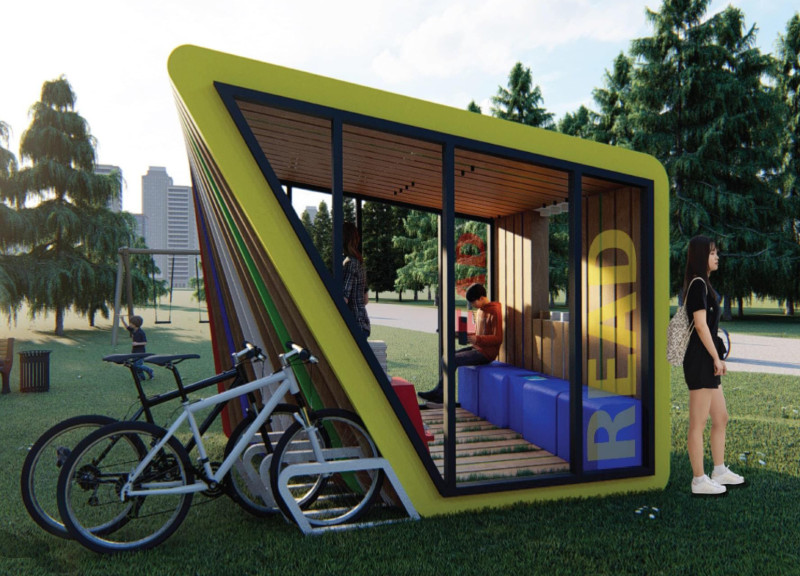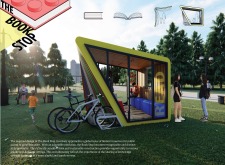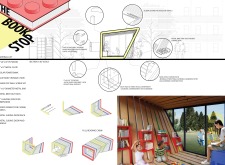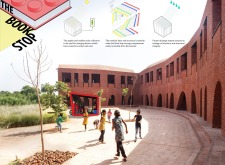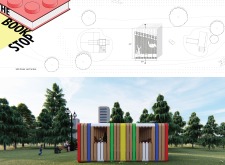5 key facts about this project
The design incorporates playful geometric forms that resonate with both children and adults, fostering exploration and engagement. The angular structure is intentionally designed to draw attention and encourage visitors to interact with the space, making it a notable addition to its surroundings. The roof design, which features a slant, not only enhances aesthetic appeal but also allows for optimal natural light infiltration, creating a comfortable environment for reading and studying.
Architectural Elements and Materiality
The Book Stop employs a variety of materials that reflect the project's commitment to sustainability and functionality. Key materials include plywood, known for its lightweight strength, and metal plates that provide structural stability. Extensive use of glazing allows for natural light, fostering a connection between the interior and the external environment.
Additionally, solar panels are integrated into the roof structure. This provides energy for internal lighting and electronic charging stations, underlining the project's dedication to eco-friendly practices. The careful selection of materials, including drywall screws and metal components, ensures durability while maintaining ease of assembly and maintenance.
Unique Design Approaches
What distinguishes The Book Stop from traditional libraries is its emphasis on interactive learning and social engagement. The layout is strategically designed to accommodate various activities, from quiet reading to collaborative group discussions. Open spaces facilitate user interaction, encouraging a communal atmosphere that promotes knowledge sharing.
Furthermore, the project embraces a playful architectural approach, with designs that mimic building blocks, stimulating creativity and exploration among visitors. This distinctive design philosophy not only serves functional purposes but also creates a visually engaging landmark that resonates with the local community.
To explore more about The Book Stop, including architectural plans, sections, and design ideas, consider reviewing the detailed project presentation. This will provide deeper insights into the design strategies and functional elements that contribute to its role as a vital community resource.


